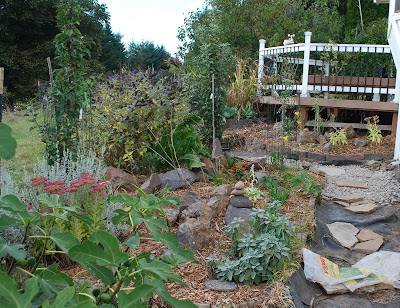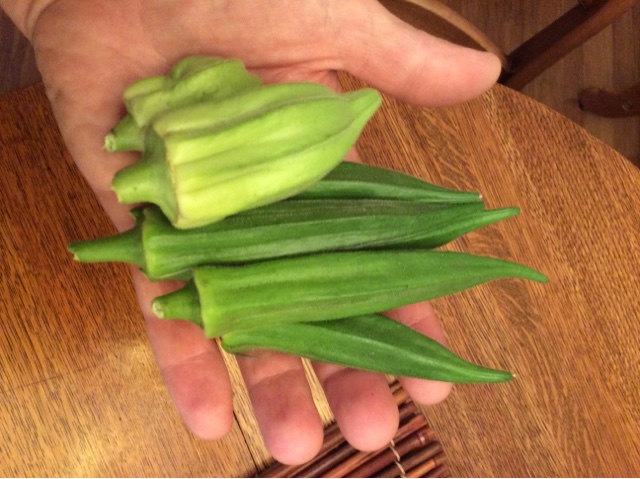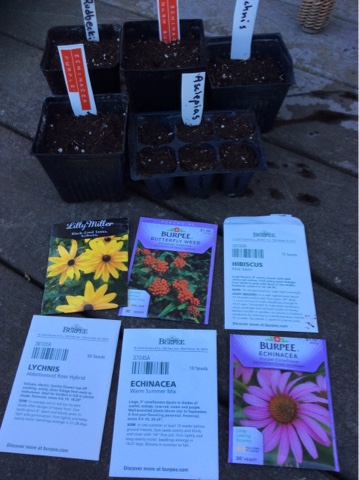 |
| Buffalo Grape. 9.21.16 |
 |
| Rock Garden Perennial Border. 9.21.16 |
I've been trying to work through some hardware issues, which resulted in decreased posting. I don't usually carry my good camera around while working in the garden, because I tend to damage delicate equipment. The Apple equipment is a few years old (I-phone and I-pad) and I've found that Apple equipment does not age well. In addition, back-compatibility of program updates is poor, and Apple inc is too overbearing with their treatment of users, so I've been de-appling my computer life.
Things are starting to come together again, on my old Windows-based laptop. Meanwhile, I've been removing hardscaping from the old place in prep for eventual sale, mainly a koi pond that presented a child hazard. I'm not a young man any more, so hauling wheel barrows of rocks has taken a month, and it's not done yet.
With cooler weather, I renovated the worst of the house perennial borders at the Battleground house.
 |
| Border, with labels. 9.21.16 |
That renovation involved - removal of thistles and wild mustard, both of which have been tenacious and invasive. I laid down newspaper or cardboard, torn such that water can seep through, but hoping that weeds and grasses will mostly be smothered. I removed most of the bearded irises - ugly about 90% of the year, and too welcoming to grass weeds. I planted divided sedums, sempervivums that I had been growing in old iris beds as a ground cover, kept daylilies and divided some, kept helleborus and some sedum in place, planted crocosmia that I divided from the old place, moved poppy roots, with dormant top, and added lambs ears -
Stachys byzantina, and echinacea varieties, both of which were on the almost-dead table at Fred Meyer and Home depot, on deep sale. These were root bound, so I cut off the winding roots, cut slits into the root ball, planted and watered in. They perked up and look much better now. I deep-mulched with tree arborist chips. The border still needs some river-rock for the edge / pathway, but is almost done.
The goal is a bed with very reduced maintenance, mostly drought tolerant plants but that respond to some care, mostly deer and rabbit tolerant plants, at a very low cost. The only new plants were deep sale with some need for TLC.
 |
| Sourdough Pizza with peppers, cayennes, and onions. 9.21.16 |
Meanwhile, with so many tomatoes and peppers, I've been trying to find ways to eat them. This sourdough pizza came out pretty good. The sourdough crust used my usual starter, with just flour, water, and salt, no other additives. These are Nikita peppers (green) and cayennes (red) - really tasty.















